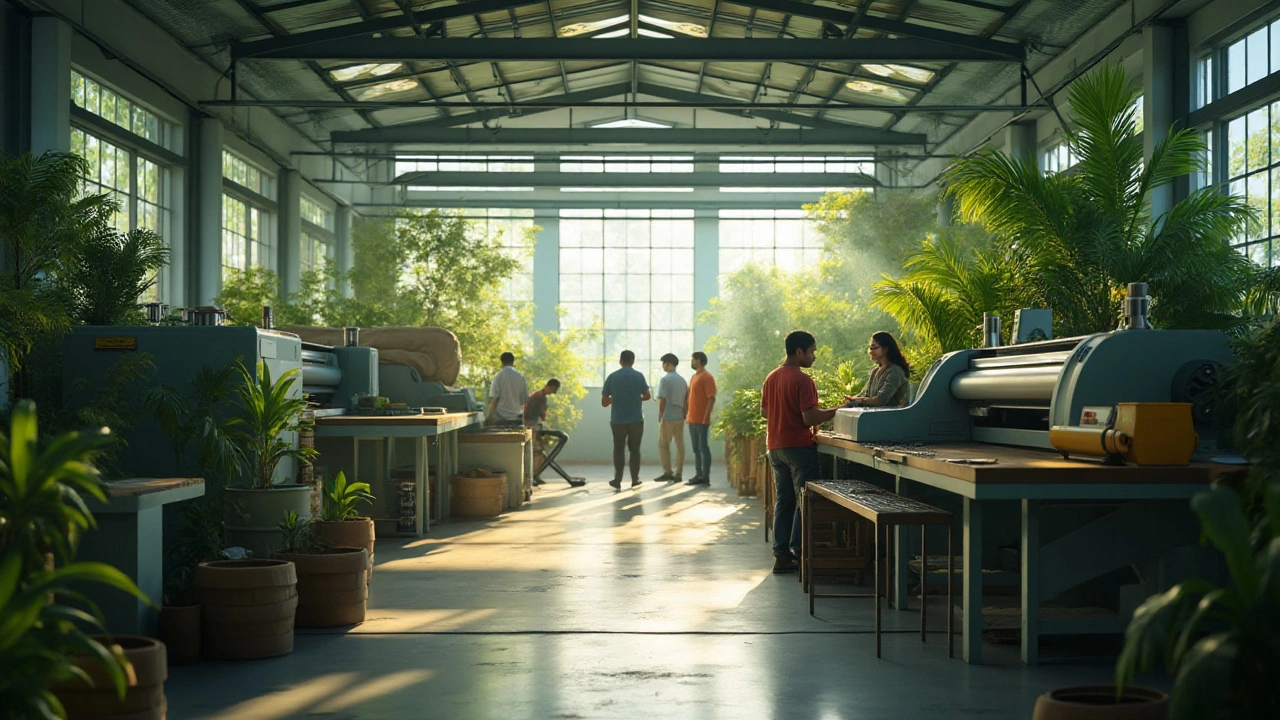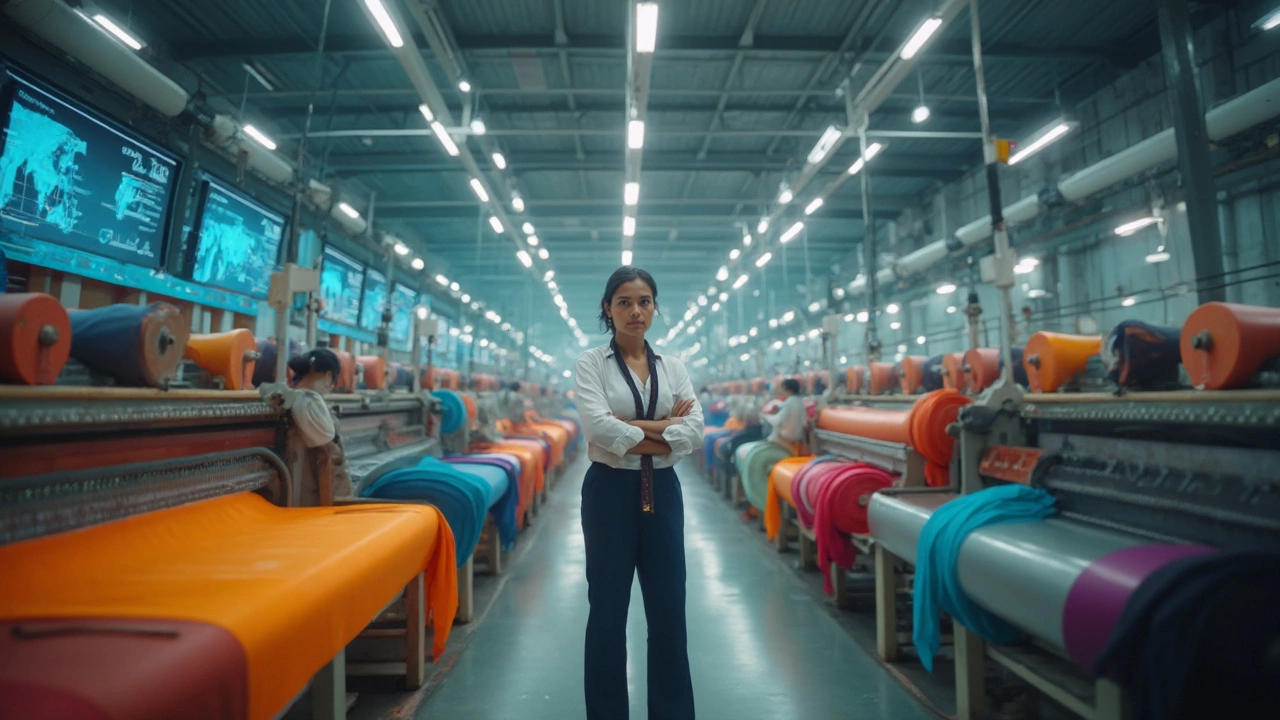The Future of Plastic: When Will It Disappear?

The quest to eliminate plastic from our everyday lives is an ongoing challenge that melds science, politics, and grassroots initiatives. While plastic has been one of the most versatile materials of the 20th century, its detriment to the planet is undeniable. With oceans burdened by massive plastic islands and wildlife suffering visibly, the push for sustainable alternatives has never been more urgent.
Manufacturers are tasked with a complicated balancing act — creating products that match plastic's convenience, durability, and cost-effectiveness while being environmentally friendly. Meanwhile, scientists and entrepreneurs around the globe are brainstorming innovative solutions to either enhance recycling or develop biodegradable alternatives.
In exploring how long it might take for plastic to become a thing of the past, we must consider the technological breakthroughs underway, legislative efforts, and the readiness of consumers to embrace change. It’s a winding road, but with every initiative and policy change, the timeline becomes clearer.
- The Environmental Impact of Plastic
- Current Innovations in Plastic Alternatives
- The Role of Legislation in Reducing Plastic Usage
- Consumer Behavior and Cultural Shifts
- The Future of Recycling Technologies
- Predictions for a Plastic-Free World
The Environmental Impact of Plastic
Plastic has become an indispensable part of our daily lives, manifesting in everything from packaging to electronics, yet its environmental toll is monumental. This material's durability, which makes it highly useful, is equally responsible for its persistence in the environment. Unlike organic materials, plastic doesn't biodegrade; instead, it breaks down into smaller pieces known as microplastics, which continue to pollute our ecosystems. It's alarming that every year, around 8 million metric tons of plastic find their way into our oceans, forming enormous garbage patches that threaten marine life.
The ecological consequences are far-reaching. Marine animals, mistaking plastic for food, ingest these particles, leading to starvation and death. It's not limited to wildlife; microplastics have permeated our food chain, found in seafood, table salt, and even drinking water, raising concerns about human health impacts. A study by the University of Newcastle estimates that people ingest about 5 grams of plastic each week — equivalent to the weight of a credit card. The continuous production of plastic, driven by our dependency, means that by 2050, the oceans could contain more plastic by weight than fish.
Moreover, the process of producing and incinerating plastic contributes significantly to greenhouse gas emissions, exacerbating climate change. It’s projected that the plastic lifecycle could add over 850 million metric tons of greenhouse gases to the atmosphere annually by 2030. This is akin to emissions from 189 new 500-megawatt coal-fired power plants. Consequently, the battle against plastic pollution requires immediate and sustained global efforts from industry, policymakers, and individuals alike.
"If we don't tackle this crisis head-on, we will pass on a legacy of environmental catastrophe to future generations," said Sir David Attenborough, a renowned natural historian.
Efforts are underway to mitigate these impacts. Many countries are introducing bans or regulations on single-use plastics, hoping to reverse the culture of disposability. Companies are investing in developing sustainable alternatives, and some have pledged to completely eliminate certain types of plastic packaging within the next decade. But real change demands collective action from us all, urging every individual to reconsider and reduce their plastic footprint. The stakes couldn’t be higher — the well-being of our planet hangs in the balance.
Current Innovations in Plastic Alternatives
In recent years, the search for alternatives to traditional plastic has intensified as researchers and companies strive to mitigate the impact of plastic waste. Biodegradable plastics have emerged as a promising solution, with materials like polylactic acid (PLA) and polyhydroxyalkanoates (PHA) leading the charge. Derived from renewable resources like corn starch and sugarcane, these bioplastics hold the potential to break down much faster than conventional plastics, making them less harmful to the environment. However, their current production process often requires large amounts of land, posing a challenge to scalability.
Another significant innovation in the quest to replace plastic is the development of plant-based polymers. Scientists have discovered ways to modify cellulose, a natural polymer found in plants, to create durable and flexible materials suitable for a variety of applications. These advancements not only reduce dependence on fossil fuels but also introduce compostable alternatives that can degrade in natural settings. Some companies, inspired by the resilience and versatility of spider silk, are even exploring synthetic biology to create highly durable yet biodegradable materials.
While innovative, these solutions are not without their limitations. Achieving the same cost-effectiveness and performance of traditional plastics remains a hurdle. Despite the challenges, investment in research and development is accelerating. Governments are providing subsidies and grants to encourage companies to adopt and refine these technologies. In this transformative phase of material science, collaboration between academia, industry, and policymakers is crucial to advance these innovations.
A study published in the journal Science Advances highlights that transitioning to plant-based and biodegradable plastics can reduce carbon emissions by up to 25%. This promising statistic underscores the impact these innovations could have on the fight against climate change.
Moreover, there is a growing interest in harnessing the power of algae and mycelium, the root structure of fungi, to produce eco-friendly packaging solutions. Algae-based materials not only capture carbon dioxide during their cultivation but also offer versatility and strength suitable for both packaging and textiles. Mycelium, with its fibrous and thread-like structure, is being crafted into packaging that can be grown in custom molds, offering a zero-waste alternative to traditional foams and plastics. Such breakthroughs signal a shift towards a more circular economy where waste is minimized, and products can safely decompose after use.

The Role of Legislation in Reducing Plastic Usage
Legislation is a formidable tool in the fight against plastic pollution, providing a framework for change that influences both industry practices and consumer habits. Governments worldwide are increasingly recognizing the unsustainable nature of current plastic usage and are implementing measures to curb it. By banning single-use plastics, imposing taxes, and incentivizing alternative options, legislation acts as a catalyst for reducing reliance on plastic and steering societies towards more sustainable behaviors.
One successful legislative example is the European Union's directive to eliminate single-use plastics by 2021, which has set a precedent for other regions. By targeting items like cutlery, plates, straws, and balloon sticks, the EU aims to tackle the products most commonly found polluting beaches. This directive not only reduces the immediate flow of plastic waste but also encourages industries to innovate in developing sustainable alternatives. These measures are backed by stringent penalties for non-compliance, ensuring companies adhere to the new standards.
In Asia, countries like India have pledged to phase out single-use plastics by 2022, highlighting the global nature of this environmental issue. Legislation is uniquely positioned to create widespread impact, impacting large populations simultaneously. The imposition of plastic bag levies in many countries demonstrates how a small change can lead to significant reductions in plastic use. For instance, Ireland introduced a plastic bag tax in 2002, leading to a 90% reduction in their usage within a year. The success of Ireland's model illustrates the power of economic disincentives in changing consumer behavior.
"Policies that once seemed radical are now being replicated worldwide," says environmental policy expert Dr. Susan Collins. "Legislation turns intents into actions, making sustainability not just a choice but a necessity."
The legislative landscape for plastics is also evolving in North America, where states like California have taken proactive steps. California’s ban on plastic bags and its push towards broader Extended Producer Responsibility (EPR) laws marks a significant shift. EPR holds manufacturers responsible for the lifecycle of their products, pushing companies to consider environmental impacts from design to disposal. This kind of legislation incentivizes innovation in product lifecycle management and waste reduction methods.
However, legislation is not without its challenges. Industries often lobby against restrictive measures, fearing increased costs and logistical complications. Despite these hurdles, governments persist, driven by mounting public pressure and environmental evidence. The challenge lies in balancing economic concerns with environmental needs, a task that requires nuanced policymaking and sometimes phased implementation to allow industries and consumers time to adjust.
In conclusion, the role of legislation in reducing plastic use is undeniable and pivotal. By setting clear regulations, offering incentives for sustainable practices, and providing penalties for non-compliance, laws shape a culture of responsibility towards the environment. As more nations join the legislative movement against plastics, the hope is that industries will not only comply but lead the charge towards a sustainable future, innovating beyond today's constraints and setting new standards for environmental stewardship. The journey is complex, but with legislation paving the way, there is optimism for a world less burdened by plastic.
Consumer Behavior and Cultural Shifts
In the whirlwind of change, consumers wield significant power in the potential reduction of plastic usage. Over the past decade, a profound shift has been noticeable as people become increasingly aware and concerned about their environmental footprint. This transformation is not just theoretical but can be observed in day-to-day choices—opting for reusable shopping bags, preferring compostable products, and supporting brands that prioritize sustainability. Social media campaigns like #PlasticFreeJuly have contributed to this movement, inspiring millions to reconsider their waste habits and challenge friends to do the same. The growing trend towards minimalism, where less is more, also plays into reducing dependency on disposable plastics.
Such a shift is also encapsulated in the buying decisions regarding packaging. A Nielsen report stated that 73% of global consumers would definitely or probably change their consumption habits to reduce their impact on the environment. Brands have listened and responded. Retail giants are reconsidering packaging designs, with a noticeable increase in the adoption of biodegradable and recycled materials to align with consumer expectations. Interestingly, this push from the consumer side is leading plastic manufacturing companies to innovate at unprecedented rates to satisfy their clientele's evolving demands.
Impact on Manufacturing
The changes in consumer culture are forcing an industry-wide introspection within plastic manufacturing companies. No longer can manufacturers afford to view eco-friendliness as an optional add-on; it has become a requisite criterion for survival. A dynamic example can be observed in consumer electronics packaging. Nearly 50% of consumers express a willingness to pay more for products packaged sustainably, with many preferring cardboard or plant-based packaging over traditional plastics. With every purchase, consumers are casting a vote for the kind of future they envision. The cultural shift is reshaping market tactics, leading to an explosion of product lines that advertise low-plastic options, using terms like 'eco-friendly' and 'sustainable' as strong selling points.
The millennial and Gen Z population are at the forefront of these shifts, demanding transparency and accountability from the brands they support. As digital natives, these generations have leveraged their adeptness at navigating online platforms to organize, advocate, and demand shifts toward sustainability in a way that previous generations have not. Companies recognize that these consumers prefer brands that not only engage in environmentally responsible practices but also openly communicate their commitment to reducing plastic usage.
"We don't need a handful of people doing zero waste perfectly. We need millions of people doing it imperfectly." — Anne Marie Bonneau, zero waste advocate.
The culture of recycling and repurposing is ascending, fostering a do-it-yourself (DIY) attitude among consumers. This mindset encourages repairing rather than replacing, creatively reusing items instead of discarding them. It's a small revolution against the single-use culture that has prevailed for decades, challenging notions of convenience often associated with plastic. Public pressure and consumption patterns inevitably push industries towards sustainable innovation, aiming for a circular economy where waste is minimized and materials are reused.

The Future of Recycling Technologies
The landscape of recycling technologies is rapidly evolving as the demand for environmentally friendly solutions becomes critical. As traditional recycling methods struggle to cope with the volume of waste generated, cutting-edge innovations are stepping into the spotlight. Among these advancements are chemical recycling processes that break down plastics into their original monomers, allowing them to be reused in the creation of new plastic materials. This approach not only reduces waste but also preserves the quality of the material, offering a promising path towards sustainable production cycles. Scientists and engineers are continuously exploring ways to make these processes more energy-efficient and cost-effective, which could revolutionize the way we handle plastic waste in the coming years.
An exciting development in recycling technology is the emergence of enzyme-based solutions. Enzymes capable of decomposing synthetic polymers offer a bio-inspired approach to managing plastic waste. Research teams across the globe have been successful in enhancing these enzymes to work faster and at lower temperatures, which significantly increases the feasibility of scaling up such operations. In a study published by Nature, novel engineered enzymes were able to degrade plastic bottles in a matter of days — a process that traditionally takes centuries in natural environments. These breakthroughs point to a future where plastics not only have a reduced environmental impact but where recycling becomes a more integrated part of the lifecycle of materials we use every day.
The role of artificial intelligence (AI) in recycling cannot be underestimated either. Leveraging AI technology, facilities can now employ machine learning algorithms to improve sorting processes. These systems can efficiently identify and separate different types of plastics based on texture, shape, and even polymer type, drastically enhancing recycling plant productivity. This level of precision reduces contamination in recycled batches, ensuring the purity of the recycled material. Such advancements not only contribute to more effective recycling but also open doors to new applications for recycled materials, potentially extending their utility beyond current limits.
"Smart technology is not just about convenience; it's about transforming sustainability into a tangible everyday practice," notes Dr. Jane Goodall, a renowned conservationist and environmentalist.
In addition to technological strides, community-driven initiatives continue to play a pivotal role in advancing recycling practices. Localized efforts that incorporate advanced technologies like blockchain for tracking waste contributions and reward systems for recycling compliance are proving to be effective. These grassroots movements are fostering a sense of accountability and awareness among consumers, which is a crucial component in reducing plastic waste. Educational programs that emphasize the importance of proper sorting and disposal contribute significantly to the efficacy of municipal recycling systems. As citizens become more informed and involved, the efficacy of recycling programs is expected to rise, alleviating some pressure from technological infrastructures.
Encouraging data from recent surveys indicates a steady increase in the adoption of recycling technologies worldwide. A study by the International Solid Waste Association (ISWA) shows that nearly 60% of countries have introduced or are piloting advanced recycling systems. In Europe, nations like Germany and Sweden are leading the charge with impressive recycling rates, setting benchmarks for other countries aiming to enhance their waste management policies. Such data underscores the viability of innovative recycling technologies in transforming global waste management strategies. As these technologies penetrate developing markets, a global shift towards more sustainable practices becomes increasingly attainable.
As we look forward, sustainability and recycling technologies intertwine, crafting a narrative of hope and responsibility. The synergy between scientific innovation, supportive legislation, and engaged consumers paints a future where plastics in their traditional form may indeed become relics of the past. With determination and collaborative efforts, the vision of a cleaner, more sustainable planet is not just a distant dream but a growing reality.
Predictions for a Plastic-Free World
As we peer into the future, the vision of a plastic-free world feels both ambitious and tantalizingly attainable. Governments, scientists, and corporations are uniting more than ever, driven by a global consciousness about the environmental impact of plastic. Predictions for a world without plastic begin with regulatory measures aimed at progressively banning single-use plastics, setting the stage for transformative change. Plastic manufacturing companies, often seen as major contributors, have turned the tides, investing in research for sustainable materials. There's growing momentum in legislation aimed at reducing plastic waste, with many countries already adopting strict regulations that set a precedent for others. In this scenario, the role of innovation cannot be understated, as new materials derived from bio-based products are paving the path forward.
Technological advancements will likely steer the next leg of this journey. Future scenarios may include intelligent design paradigms that prioritize end-of-life recyclability, biodegradable interchangeables, or perhaps breakthroughs in molecular tagging that enhance recycling efficiency. Startups in the materials science domain are emerging, exploring cellulose-based polymers and other sustainable alternatives. There’s a steady growth in the exploration of closed-loop systems where materials are efficiently reused with minimal environmental footprints. A quote by Ellen MacArthur, an outspoken advocate for a circular economy, sums it well:
"Systemic changes are necessary. Leaders in design and manufacturing must lead the way to a future where material choice respects both the economy and the planet."
The economic landscape will likely shift significantly, driven by consumer demand for environmentally responsible products. Expectations dictate that market incentives will realign, favoring companies that champion sustainable practices. To understand the potential financial implications, it’s helpful to consider a hypothetical scenario where greener products lead to increased market share. Industries lagging in sustainable transitions could face potential declines as consumers increasingly value eco-friendly commitments. This is coupled with predictions pointing towards a burgeoning demand for eco-labeling and certifications, driving transparency and informed decision-making amongst consumers.
Policy frameworks will evolve to reflect these changing dynamics. By 2040, it’s conceivable that comprehensive policies mandating the use of biodegradable alternatives across industries will have become the norm. The timeline might accelerate if recycling infrastructure catches up. Developing countries, often challenged by plastic waste, could leapfrog into advanced recycling ecosystems with global assistance. Government incentives, funding for research, and cross-sector collaborations may enhance this progress, improving the alignment between environmental needs and economic viability. Countries leading the charge may experience benefits that extend beyond environmental improvements, including boosting their global standing as pioneers of a sustainable economy.
Education and behavioral change represent the final frontier. Institutions worldwide are progressively weaving environmental consciousness into curriculums, a proactive approach intending to instill lifelong sustainability values. Individuals equipped with such knowledge are more prepared to embrace conscious consumerism and partake actively in environmental advocacy. Social movements continue to grow, prompting significant action from industries traditionally resistant to change. By identifying plasticalternatives and leveraging the growing awareness and activism, society stands at the precipice of potentially one of the most remarkable revolutions in materials science.





